Though only 25-years-old when he died, Manfred von Richthofen downed more than 80 enemy planes in two short years of World War I, which earned him the formidable title of Red Baron.
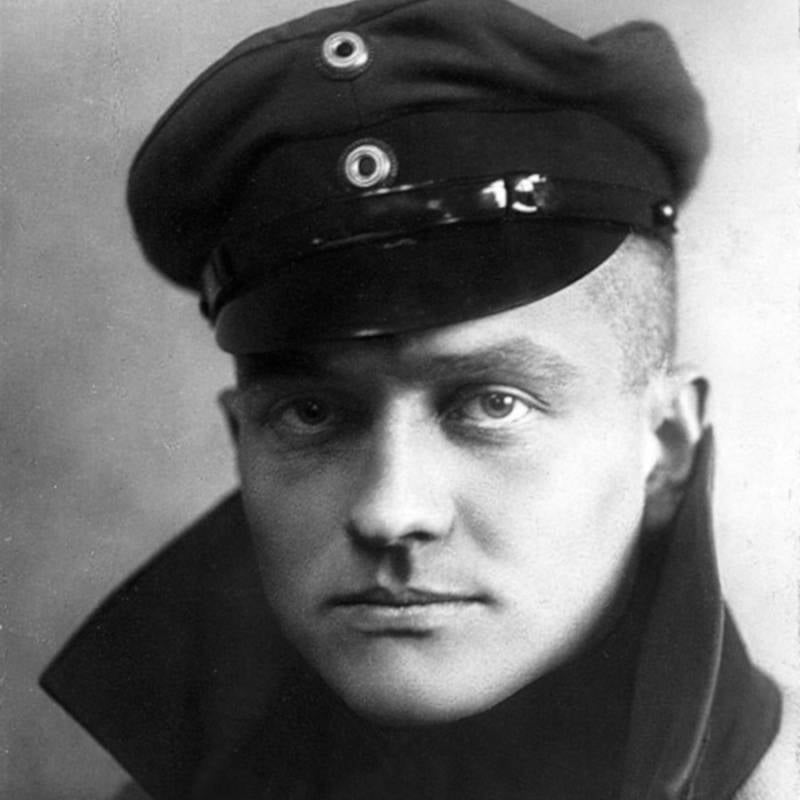
Manfred von Richthofen, the Red Baron, circa 1917.
Manfred von Richthofen was World War I’s all-star fighter pilot, known as a “flying ace”. In a time when militaries were beginning to experiment with deploying airplanes as a weapon of war, the fearsome young man stepped up to become one of the best pilots the world had ever seen. In just two short years of the Great War, he earned a world-renowned reputation as the deadly Red Baron of the skies.
Manfred von Richthofen’s Early Life
The man who would become the Red Baron was born into an affluent Prussian family of nobles in Poland in 1892. His father was in the Prussian army and so both Manfred and his younger brother, Lothar, followed their father into military service.
Von Richthofen and his brother were enrolled in the military school at Wahlstatt by age 11.
Manfred von Richthofen then attended the Royal Military Academy at Lichterfelde and would later rise to the rank of lieutenant in the 1st Uhlan Cavalry Regiment. When World War I broke out, his unit saw action, and the young lieutenant took part in the invasion of Belgium and France. Once trench warfare settled in, von Richthofen switched to the infantry because cavalry was no longer needed.
The Red Baron Joins The Royal Flying Corps
The young man grew weary of serving in the trenches. Rather than fight, he was relegated to supply duties. He had already earned the Iron Cross for courage under fire as a cavalryman but he felt he was underused in the trenches.
The future Red Baron wanted out. He wrote to his commanding officer and asked for a transfer to the Imperial German Air Service. The young von Richthofen said he didn’t join the military “to collect cheese and eggs.”
His requested was answered. By June 1915, von Richthofen began to accompany pilots in the backseats of reconnaissance planes. While the pilot flew, von Richthofen gathered information. But even this was not enough action for the headstrong officer.
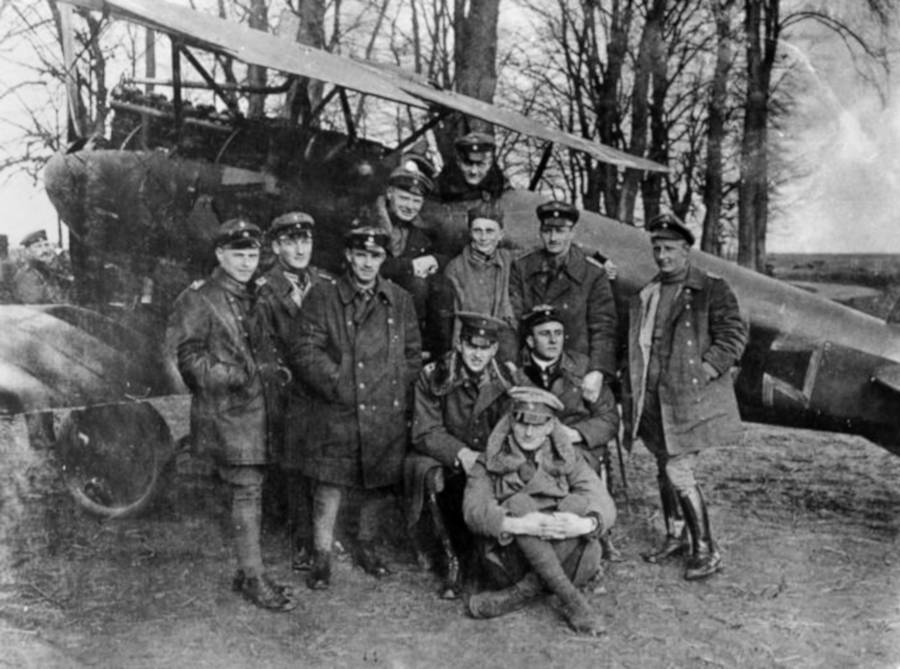
Wikimedia Commons Manfred von Richthofen’s unit, including his brother Lothar, in 1917 or 1918.
That summer, von Richthofen earned his pilot’s license.
Under the tutelage of legendary German ace Oswald Boelcke, the Red Baron turned from a mere recon tech to a fearsome fighter. By September 1916, von Richthofen was ready to fly and fight on his own. By this time, German fighter planes were a fearsome sight, equipped with their own machine guns, known as the Fokker Eindekker monoplane series. Von Richthofen would not be assigned one of these planes at first, but it wouldn’t matter.
On Sept. 17, 1916, the Red Baron downed an allied aircraft to score his first enemy kill. Before the year was out, he downed 15 more planes to become the greatest living ace in the German military.
He was officially credited with the Blue Max, Germany’s highest military decoration, and then given the command of his own squadron, the Jasta 11. The unit featured several of Germany’s best pilots including his younger brother, Lothar.
About the same time, von Richthofen had his Albatros D.III fighter plane painted blood-red.
The ensuing spring saw the Red Baron’s deadliest action. He shot down more than 20 planes in April 1917 alone which brought his total kills to 52.
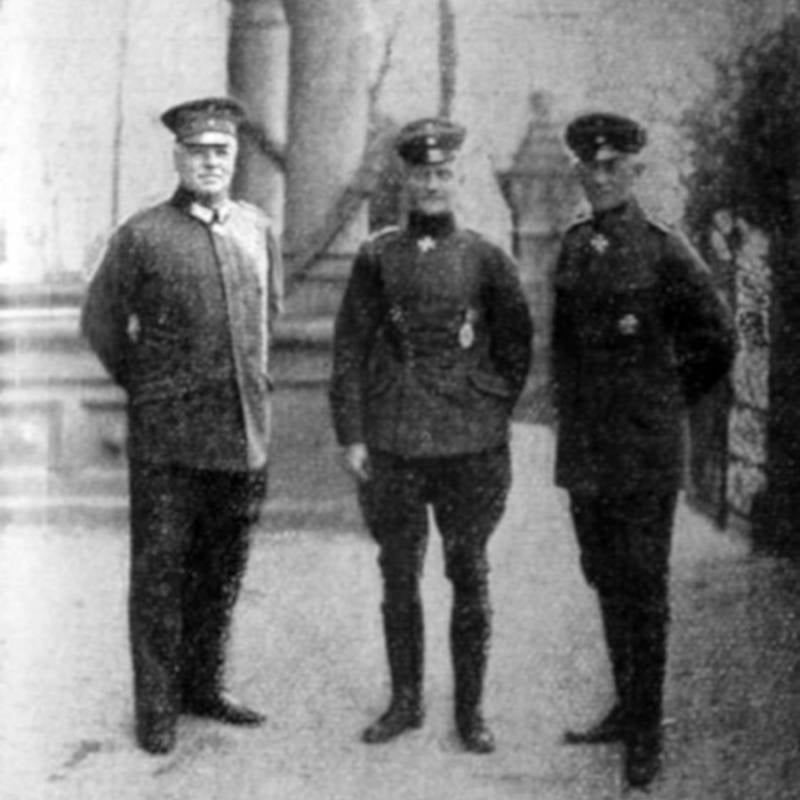
Wikimedia Commons The Red Baron, center, with the two commanding officers of the entire Imperial German Air Service, 1917.
As a flyer, von Richthofen was a conservative tactician. Instead of brazenly going at an enemy squadron, unlike other aces of the day, the Red Baron often hung back in tight formations until he saw an opening. With the help of his wingman, the legendary ace would dive out of the sky, with the sun at this back, to take down enemy planes.
Enemies rarely saw him coming. All they saw was the bright glow of the sun above them before having their fuselages ripped to shreds by bullets during an aerial ambush.
A combination of deadly flying skills and a blood-red plane earned von Richthofen his infamous pseudonym. His reputation spread worldwide, known to the French as Le Petit Rouge, the British as Red Baron, and his comrades as der rote kampfflieger. He would later release an autobiography of the same name which translates to “The Red Fighter Pilot.”
Even with more than 50 kills, the ace wasn’t done yet.
The Flying Circus
Other members of the Jasta 11 took their cues from the Red Baron. Soon, the entire squadron was awash in bright red.

Wikimedia Commons The Red Baron’s Fokker triplane, his distinctive aircraft.
Because planes didn’t fly from one base to the next due to fuel limitations, planes were dismantled and put on trains. When the Jasta 11 packed up to go to another airfield, the trains would go through the countryside with bright red planes on the flat cars. This only added to their legend.
The unit earned the nickname The Flying Circus because of their quick skills in the air as if the planes were making acrobatic moves.
By June of 1917, von Richthofen earned the command of four squadrons of planes, the Jagdgeschwader I.
It was in this unit that the Red Baron finally received his triplane, the distinctive red Fokker Dr.1, for which he was most famous.
The Red Baron Is Finally Brought Down
The Red Baron was just as flamboyant as his legendary status suggested. He commissioned a German jeweler to make silver cups for every enemy kill. Each cup also showcased the date of the kill.
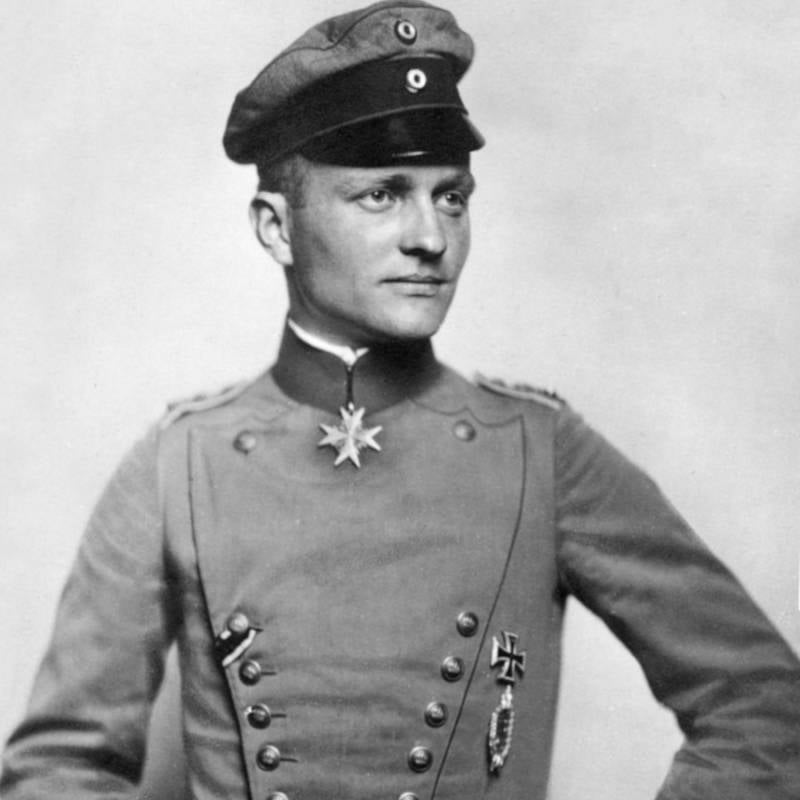
Wikimedia CommonsManfred von Richthofen on a German picture postcard, circa 1917.
The pilot suffered many close brushes with death during his career. The most serious was on July 6, 1917, when a bullet grazed his head during a dogfight with British planes and he fractured his skull. He never quite fully recovered from this incident and he complained of frequent headaches after that. Despite the serious injury, von Richthofen returned to the air in just a few weeks.
Eventually, the Red Baron’s luck ran out. Near Sailly-le-Sac, France, an air battle ensued between the Flying Circus and a British squadron. Capt. Arthur Roy Brown of Canada engaged the Red Baron. Australian machine gunners on the ground also shot at the Fokker triplane from below.
There was controversy over who got the kill, but the Red Baron went down in flames regardless on April 21, 1918. Von Richthofen took a bullet in the abdomen before crash-landing in a field.
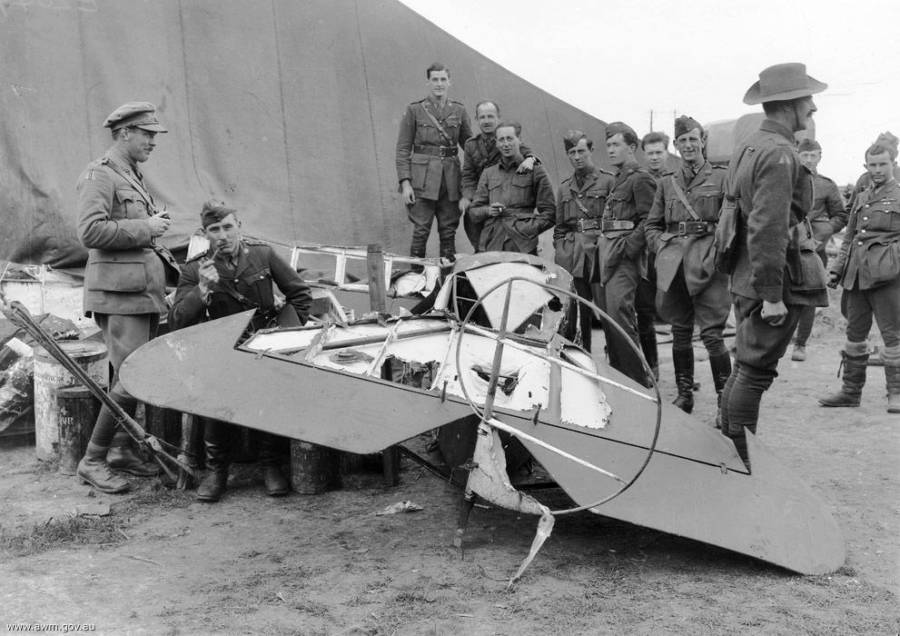
Wikimedia Commons The remains of the Red Baron’s Fokker triplane after it was shot down in April 1918.
The Red Baron was buried with full military honors. His deeds lived on in folk songs, films, television shows, and comic strips. Though he was only 25-years-old and in the skies for two years, the Red Baron’s kill record stood for more than 25 years.
Read more about World War I flying aces by taking a look at the life of Eddie Rickenbaker. Then, If you’re interested in the early days of flight, check out these images of early airplanes.





